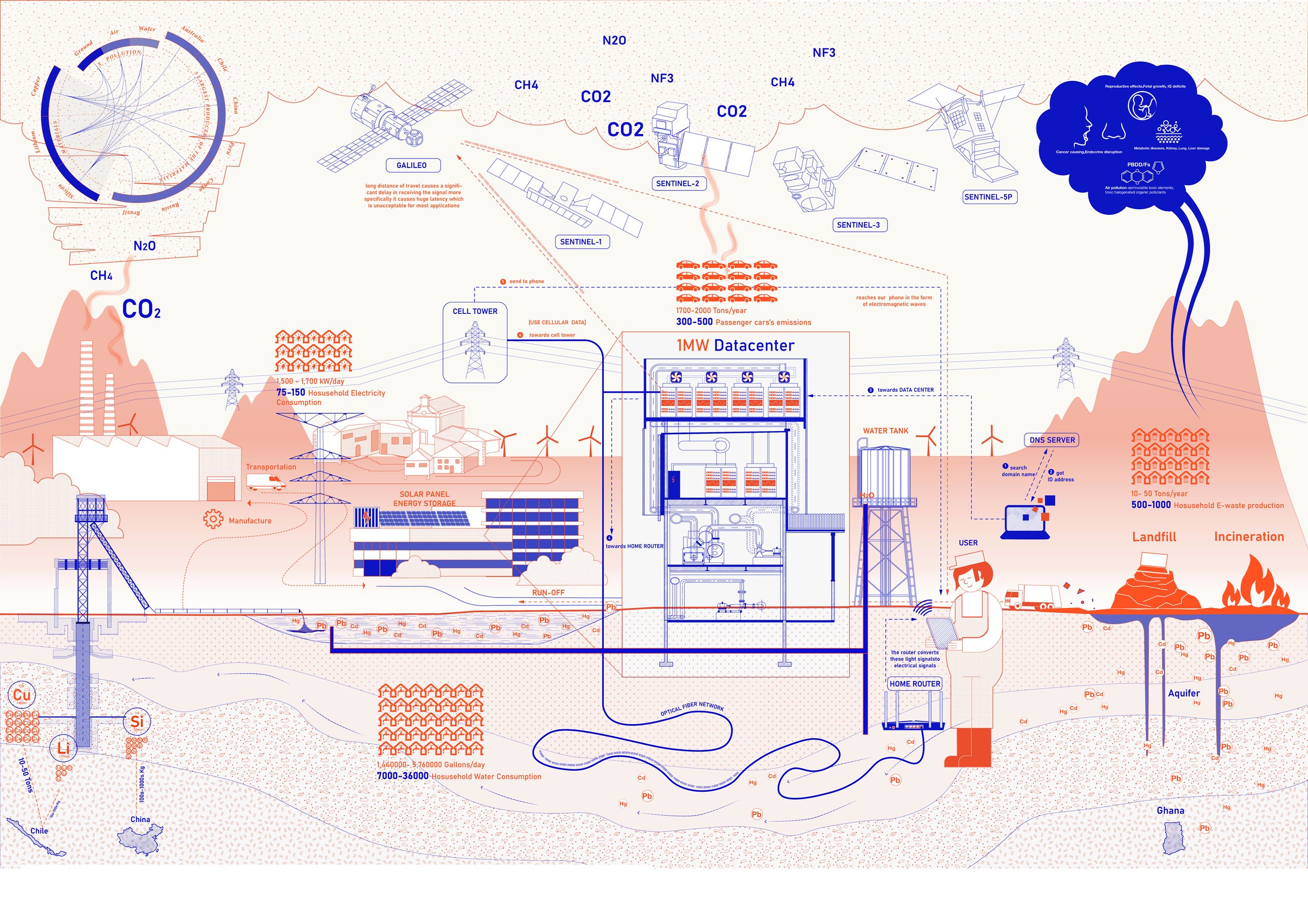Air and Data
Data is not invisible
“We are led to believe that DATA virtualization separates us from any tie to location, in practice...data centers are being built all over the world.”
Project Summary
This project began with an environmental concern: Lombardy’s severe air pollution. Through the lens of data infrastructure, we explored how the digital world contributes to physical environmental impacts. Our core statement : data is not invisible. It challenges the myth of a weightless internet. Using mapping and flowcharts, we traced how data travels through cables, stations, and servers, revealing the hidden infrastructure behind everyday digital use. What if heat waste from servers warmed greenhouses? What if old hardware was reimagined for new civic use? In Milan, we proposed site-specific designs that connect data centres with public life, adapting strategies for urban, suburban, and rural contexts. This project repositions data as not just code, but something with weight, heat, and consequence. By making data visible, we aim to spark new conversations about digital responsibility in landscape and urban design.
Data Center Classification
Based on the Data Center Catalogue, 46 data centers were analyzed considering Roof Type, Building Type, Size, and Context.Using this analysis, we developed a comprehensive toolkit designed to be deployed at suitable sites.
Trash to Treasure
To better understand the hidden potential of waste, let’s explore questions that connect data center byproducts.
Data Center Education Toolkit
The toolkit is designed to raise awareness about the implications of data usage. It showcases interventions that repurpose materials from data centers, such as recycling unused hardware and converting waste heat into resources like food and water. By visualizing the hidden costs behind data consumption , and more ,the space and resources occupied by digital waste.
Scales of Intervention: Data Infrastructure Across Contexts
From rural to urban settings, data centers adapt their functions to serve local needs. In rural areas, vacant land becomes a multifunctional resource—housing an archive to safeguard human data, groundwater pumps to mitigate drought, and a vertical farm that reuses waste heat to grow food efficiently. In the suburban context, drones measure air quality by comparing pollution levels inside and outside a protective bubble. In dense urban environments, compact plug-in toolkits are installed near data centers to provide community amenities such as a herbarium, thermal pool, and social hubs—demonstrating how data infrastructure can give back to its surroundings at every scale.
-
Location: Milan, Italy
Type: Academic
Year: 2024
Role: Team Collaborator
Theme: Landscape Research, Urban Renewal
Institution: Politecnico di Milano
Supervised by: Prof. Francesco Garofalo and Prof. Chiara Geroldi
Collaborated with: Jie Liu, Sinwei Sui, Tinnix Jingsu He, Youzhu Chan -
Investigated the environmental footprint of data infrastructure, linking digital networks to real-world air pollution and spatial impact.
Mapped the flow of data across northern Italy, making the invisible tangible through storytelling, spatial analysis, and conceptual design.
Developed a visionary framework connecting data centres to public life, proposing heat reuse and material recycling strategies for urban, suburban, and rural areas.
Proposed Milan-specific interventions that promote sustainable, symbiotic relationships between tech infrastructure and civic life.
Challenged perceptions of the digital realm as intangible—positioning it as a physical actor within ecological and urban systems.
-
QGIS: Mapping data centre locations and regional infrastructure
Rhino / SketchUp: Speculative modeling and adaptive reuse proposals
Adobe Illustrator & Photoshop: Concept development, flow diagrams, visual storytelling
InDesign: Layout design for final presentation and documentation
Desktop Research: Data sourcing on telecom, energy use, and environmental metrics













